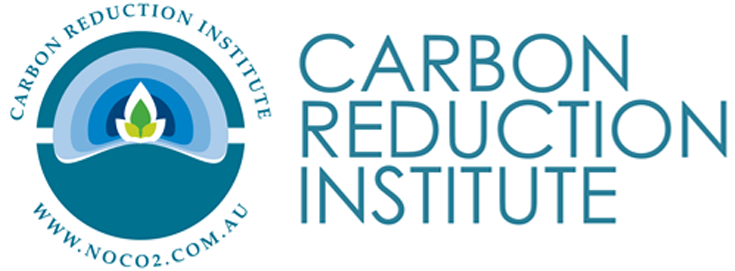
Profiteering from the Climate Crisis
We all know that businesses exist to make a profit. At the same time, most people would accept that markets need guardrails, although there may be disagreement over the extent to which governments should interfere in private markets.
Key principles that support competition and consumer protection in Australia are enshrined in law through the Australian Competition and Consumer Act (2010). Further, specific guidance has been provided by the ACCC in relation to green marketing claims, due to the increased risk of misleading and deceptive claims that can arise with such claims.
Misleading and deceptive environmental claims are anti-competitive, in that they can impact the profits and success of businesses competing with businesses making such claims: especially if the competitors have also made environmental claims and have incurred significant expense to fully comply with the relevant requirements.
Misleading and deceptive environmental claims destroy consumer confidence in such claims. This reduces the incentive to make such claims, thereby reducing climate action in the economy and choice for the consumer.
Misleading and deceptive claims lead to a reduction in overall climate action in the economy. This case demonstrates how this could potentially happen.
Background
Yesterday, 11 March 2025, The Carbon Reduction Institute (CRI) filed a complaint with the Australian Consumer and Competition Commission (ACCC). The complaint relates to claims made by Diamond Energy: specifically, that they are ‘beyond carbon neutral’ and deliver more renewable energy to the grid that their customers consume; both of which CRI contends are potentially misleading and deceptive under the CCA (2010).
With the assistance of the Environmental Defenders Office this complaint calls out what we consider to be an unfulfilled carbon and renewable energy claim.
Reasons for taking this action
Multiple clients of CRI requested an offset for their electricity plans provided by Diamond Energy, on the basis that it is ‘beyond carbon neutral’. Our investigations uncovered that this claim and others made by Diamond Energy were not supported by the evidence found on the Renewable Energy Certificate (REC) Registry. Written requests by CRI to Diamond Energy for more information to support their claims were not addressed, except to refer us to a verification report provided on the Diamond Energy website.
To retain carbon neutral NoCO2 certification, CRI clients who purchased their electricity from Diamond Energy were required to offset the emissions related to their electricity consumption on the basis that the Diamond Energy electricity product was not a carbon neutral product.
Further, these clients were looking to support an increase in grid renewable energy, which on the evidence in the REC registry, did not result from their purchase of electricity from Diamond Energy. RECs and the REC registry are discussed in more detail below.
These clients thought that they had done their due diligence. And of course, Diamond Energy publish a verification report to purportedly support their claims of being ‘beyond carbon neutral’ and that they deliver more renewable energy to the grid than their customers consume.
Substantive Issues
To meet the claim of being ‘beyond carbon neutral’, Diamond Energy would need to deliver more renewable energy to their customers than their customers were consuming. This was established by the ACCC in 2016 in a ruling against Momentum Energy.
In the ruling, the ACCC found, “Although Momentum is owned by Hydro Tasmania, the electricity it supplies comes from the National Energy Market, not from hydroelectricity generated in Tasmania. By its advertising campaign, Momentum gave consumers the misleading impression that Momentum offered a renewable energy product, when this was not the case,” ACCC Chairman Rod Sims said.
In the same manner, Diamond Energy renewable generation assets will deliver electricity to the grid whenever the wind blows and the sun shines, and not as a result of the volume of electricity consumed by their customers. The market-based mechanism used to apply renewable energy supplied to the grid to the consumption of a customer, is a product called a REC.
To attach a unit of consumed electricity to a unit of renewable energy supplied to the grid, the REC must be retired (destroyed) to the unit of electricity. Retirement ensures that the RECs can’t be on sold or retired to another account.
After requests from our customers to account for Diamond Energy as net zero emissions in their carbon inventories, we conducted a compliance review of the ‘beyond carbon neutral claim’.
What we discovered through this compliance review was a claim made by Diamond Energy that their supplier specific emissions factor was a negative emissions value (-2.12t-CO2e per MWh), alongside statements like, “Go beyond carbon neutral… from our first customer we have offset most of their everyday carbon emissions.”
It was our concern that these statements appear to be intended to lead consumers to believe that the consumption of electricity through Diamond Energy leads to a reduction in their own carbon footprint. These statement triggered further investigation.
The investigation included downloading the REC registry records relating to Diamond Energy generation assets. What was immediately obvious was that RECs from Diamond Energy generation assets were not being retired voluntarily to their customer’s electricity consumption. Further, the majority of RECs produced by these assets were sold to organisations like Energy Australia to meet their legal obligations under the MRET legislation.
Without the voluntary retirement of RECs to their customer’s electricity consumption, Diamond Energy customers are only receiving standard electricity from the grid, not renewables and not a carbon neutral product. Diamond Energy should not be considered as having a greater renewable energy mix than any other electricity provider.
Clarifications
This complaint relates to potentially misleading and deceptive claims. It does not relate to renewable energy as an energy source, except that the potentially misleading and deceptive claims relates to a renewable energy product. This complaint does not address the effectiveness or efficacy of RECs or carbon credits, but rather how they should be applied in carbon accounting when making carbon neutral or net zero claims.
Further, if it was to be established that the claims of being “beyond carbon neutral” and to deliver more renewable energy to the grid than their customers consume, were in fact misleading and deceptive, the accountability for the claim lies solely with Diamond Energy.
Ratings agencies can’t be expected to identify all potentially misleading and deceptive claims; especially where the identification of such claims would require specialist knowledge, but we do think additional checks and balances can be added to rating agency awards and criteria for products that rely on environmental claims.
Greenpeace
CRI fully endorses the work of Greenpeace, especially regarding their efforts to protect and restore biodiversity and fight climate change.
Conclusions
Organisations and consumers should be able to rely on environmental claims made in the marketplace where they are backed by certification or a verification report. Evidence of widespread corporate greenwashing in the Australian economy has been uncovered by the Senate Standing Committee on Environment Greenwashing Inquiry.
In such an environment we recommend that ratings agencies should seek evidence of claimed environmental action before determining ratings or awards for products that make environmental claims. For carbon reduction claims evidence could include carbon audits or Life Cycle Assessments (LCAs) or Environmental Product Declarations (EPDs) or other reports. Additionally, evidence of carbon reduction should be sought, including carbon credit and LGC retirements and any evidence of certification or verification.
The ACCC is stretched for resources and is subject to political direction in relation to priority setting and resource allocation. Therefore, in relation to environmental claims compliance activity, we would also encourage the ACCC to investigate those claims that seem to defy scientific or technical logic or are particularly ambitious, especially in high emissions industries.
Final Comments by Rob Cawthorne, Managing Director
“After 18 years of working in the voluntary carbon market, we have seen it all, when it comes to greenwashing: but there is one common theme that arises time and time again. Organisations who push to maximise the promotional benefits of their claim, without understanding the full implications of their claim, will quite often not implement the proper processes to manage and administer their ambitious claim and therefore will often end up greenwashing.”
Join us in our fight against climate change!
If you want to learn more about climate change and how we can help you become part of the solution, please contact us today.
We offer a range of services that can help you reduce your carbon footprint and contribute to a greener future.
Whether you need a carbon audit or carbon neutral certification, together we can make a difference for our planet and our future generations.

